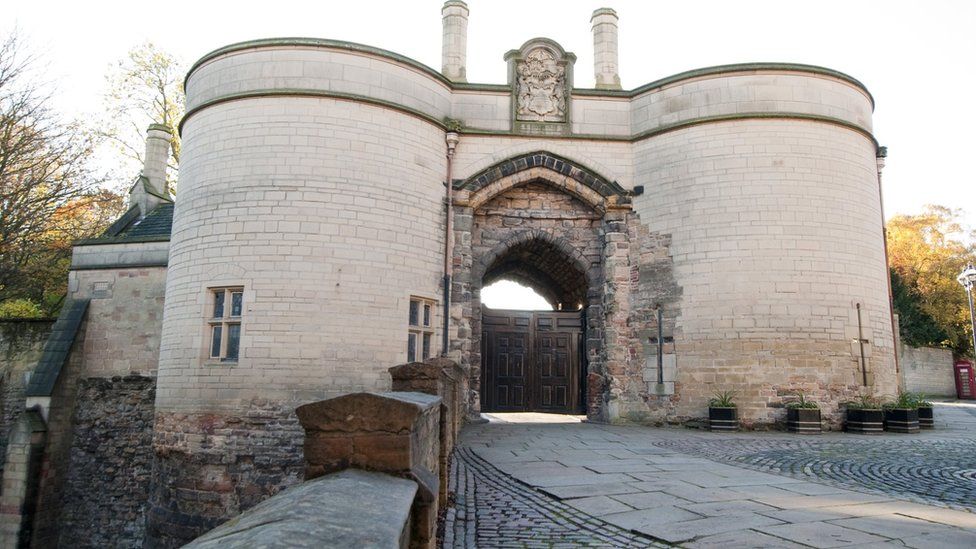Nottingham Castle is one of England’s best-known castles. It has become popular for its connection to the Robin Hood legend, where the titular English folk hero establishes his headquarters in an Anglo-Norman castle.
The Sheriff of Nottingham, Robin Hood’s arch nemesis, was rumoured to be headquartered at what became medieval Newark Castle.
Myths and Legends
There are many myths and legends surrounding this legendary castle; what all of the stories have in common is that they mainly tell of Kings and their Queens.
The truth behind the Nottingham Castle story, though, is that it has been a cornerstone for many different levels of society: from Royalty to Governors, Dukes and even ordinary people like you and me.
It’s famous battles, fearless wars, valiant guardians and the courage to fight for what is just rather than what is easy all add to the castles rich history.
Early History
The Nottingham Castle has been around for nearly 1,000 years and has been witness to many extraordinary events – courage and cowardice, coups and conflict – since its first stones were laid.
After the Norman conquest in 1066, William asserted his control over England. He decided to build Nottingham Castle in 1068 – constructing a wooden motte-and-bailey fort on the banks of the River Trent.
Civil War
Within 100 years of the death of the last Anglo-Saxon king, a bloody civil war broke out and Nottingham Castle was controlled by people who supported King Stephen.
During the siege, held by Robert of Gloucester, who is Empress Matilda’s brother, he was unable to captured the castle. As a result of this siege, the town was plundered
Stephen had issues keeping the English throne after 1141. He lost a battle against Matilda’s army while defending Lincoln Castle. Nottingham Castle also surrendered to Matilda in the midst of all this conflict.
After his father Stephen’s passing, Henry II was crowned.
He rebuilt the settlement with tall walls made from stone and built many other dwellings – including his favourite: “a house for the king’s falcons”.
Richard’s Claim
When Henry’s son, Richard, was captured in Austria and his brother, John assumed the throne, Richard lead an army and returned to England to reclaim his rightful place.
The following years saw the reign of King John. When his lords and barons forced him to sign Magna Carta, a document outlining their rights, he did not agree with the stipulations which ensured that they had rights too.
To protect the city from attack, John fortified Nottingham by building a castle. His son, Henry III continued these defences by adding twin towers to the castle’s outer gate.
After his father Edward II died in 1327, 14-year-old Edward III was crowned King.
Edward’s supporters led a coup three years later to get rid of his mother and boyfriend Roger Mortimer, who had been ruling the country.
The treasurer of the reign of Edward III, Robert de Mortimer was executed for treason in 1330. King Nottingham remained a close friend and Edward III held many important parliaments there, passing legislation for sale of cloth and fur.
Executions and a New King
Richard II ordered the execution of both the Earl of Arundel and the Earl of Warwick in Nottingham Castle in 1397. This event would be a huge turning point for Henry Bolingbroke, who would then go on to take Richard’s crown for himself.
Joan of Navarre, Henry’s wife, found the nickname for four windmills that she built at Brewhouse Yard to be “Sparrow, Donne, Dosse & Gloff”.
That concludes the early history of Nottingham castle.
Bradgate Brides has seen brides-to-be travel far and wide to visit our elegant bridal suite. We’ve seen brides from Nottingham and further afield who have made a special trip to us to try on their dream dress. It’s just a short journey either by car or rail. We look forward to seeing you soon.
